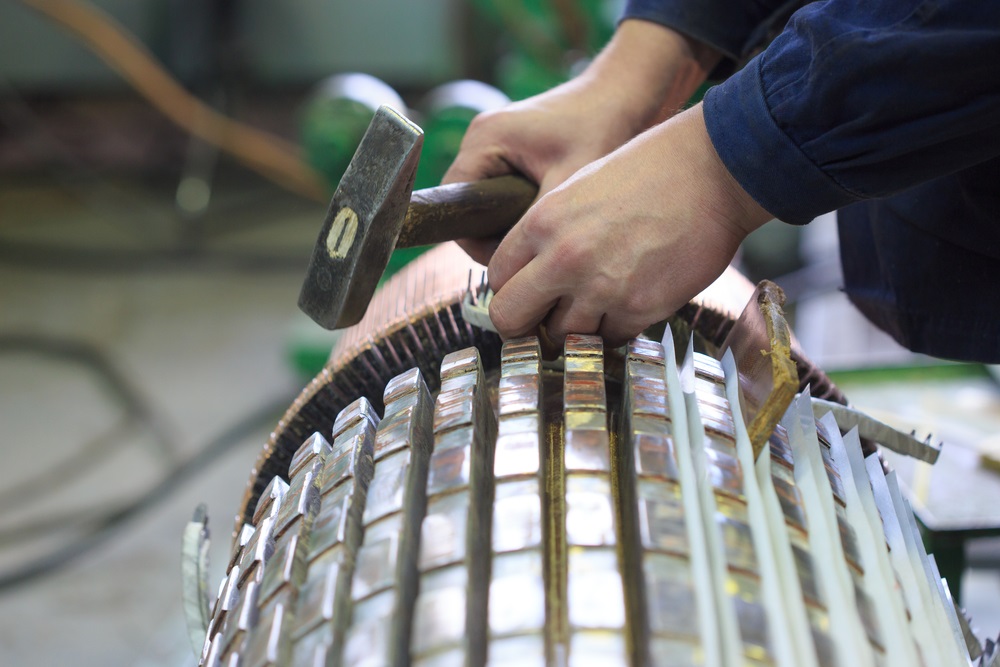Repair or replace an existing electric motor? This is the dilemma that all companies that use them faces from time to time. Both replacing and repairing electric motors is expensive, so how do you determine the best course of action when you find your electric motor out of operation? There are several factors you need to consider before making a decision and you need to gather the information about all of them before making the best choice for your operation.

Bearing failures are a common problem with electric motors, and if a bearing failure occurs, it causes the rotor to rub against the stator core which damages the laminations. If the laminations of the stator core are damaged, it takes a lot of time and effort to rewind the motor. And if this motor is successfully rewound, there is a good chance that it will be less efficient than before and run at a higher temperature which may lead to another failure sooner, rather than later. You probably would be better off replacing the motor if damage has occurred to the stator core as the result of a bearing failure.
Is this motor critical to your operations? If it goes down, what does that mean for your operation? If it means lost production hours, angry customers, and interruption of service, you should have a backup motor either on hand or available through an industrial electric motor asset management program. If it is not, perhaps a repair or electric motor rewind will be sufficient.
If this motor is in constant operation, 24/7/365, then be sure to keep up with your preventative maintenance schedule for the electric motor to hopefully prevent any unplanned downtime.
The age of the motor is very important in these decisions. Motors manufactured before 2005 are far less efficient than those manufactured after that time. New standards established by the Energy Policy Act of 2005 and the Energy Independence and Security Act of 2007 mandated that electric motors be more energy efficient, which will save you money in the long run.
If you are on a tight budget, it is good to understand that the initial purchase of a new electric motor is only a small portion of the cost associated with that purchase. One of the biggest costs associated with operating an industrial plant is energy, with some studies suggesting that electric motors consume about 70% of all energy used by the company. One way to reduce these high energy costs is to upgrade and replace your inefficient electric motor with a newer, more energy efficient model. The savings in energy costs will more than make up for the initial purchase price of the motor.
Depending on the type of motor in need of a repair, rewinding it might be a cost-effective option. The typical cost for rewinding a motor is between 30 and 50% of the cost of replacing that motor. A good motor rewinding service can make your electric motor just as efficient as the day you bought it in many cases.
Not sure if you should repair or replace your electric motor? Let our experts help you make that decision. Give us a call at 1-800-829-7454 or complete our online form at the bottom of our Contact page to get started right away.